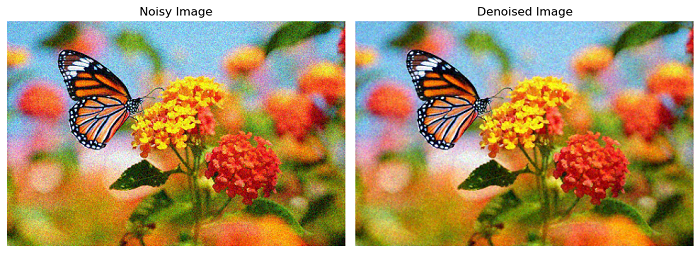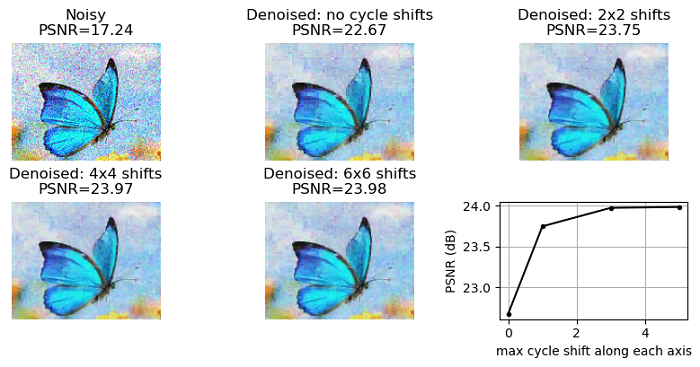
- Scikit Image – Introduction
- Scikit Image - Image Processing
- Scikit Image - Numpy Images
- Scikit Image - Image datatypes
- Scikit Image - Using Plugins
- Scikit Image - Image Handlings
- Scikit Image - Reading Images
- Scikit Image - Writing Images
- Scikit Image - Displaying Images
- Scikit Image - Image Collections
- Scikit Image - Image Stack
- Scikit Image - Multi Image
- Scikit Image - Data Visualization
- Scikit Image - Using Matplotlib
- Scikit Image - Using Ploty
- Scikit Image - Using Mayavi
- Scikit Image - Using Napari
- Scikit Image - Color Manipulation
- Scikit Image - Alpha Channel
- Scikit Image - Conversion b/w Color & Gray Values
- Scikit Image - Conversion b/w RGB & HSV
- Scikit Image - Conversion to CIE-LAB Color Space
- Scikit Image - Conversion from CIE-LAB Color Space
- Scikit Image - Conversion to luv Color Space
- Scikit Image - Conversion from luv Color Space
- Scikit Image - Image Inversion
- Scikit Image - Painting Images with Labels
- Scikit Image - Contrast & Exposure
- Scikit Image - Contrast
- Scikit Image - Contrast enhancement
- Scikit Image - Exposure
- Scikit Image - Histogram Matching
- Scikit Image - Histogram Equalization
- Scikit Image - Local Histogram Equalization
- Scikit Image - Tinting gray-scale images
- Scikit Image - Image Transformation
- Scikit Image - Scaling an image
- Scikit Image - Rotating an Image
- Scikit Image - Warping an Image
- Scikit Image - Affine Transform
- Scikit Image - Piecewise Affine Transform
- Scikit Image - ProjectiveTransform
- Scikit Image - EuclideanTransform
- Scikit Image - Radon Transform
- Scikit Image - Line Hough Transform
- Scikit Image - Probabilistic Hough Transform
- Scikit Image - Circular Hough Transforms
- Scikit Image - Elliptical Hough Transforms
- Scikit Image - Polynomial Transform
- Scikit Image - Image Pyramids
- Scikit Image - Pyramid Gaussian Transform
- Scikit Image - Pyramid Laplacian Transform
- Scikit Image - Swirl Transform
- Scikit Image - Morphological Operations
- Scikit Image - Erosion
- Scikit Image - Dilation
- Scikit Image - Black & White Tophat Morphologies
- Scikit Image - Convex Hull
- Scikit Image - Generating footprints
- Scikit Image - Isotopic Dilation & Erosion
- Scikit Image - Isotopic Closing & Opening of an Image
- Scikit Image - Skelitonizing an Image
- Scikit Image - Morphological Thinning
- Scikit Image - Masking an image
- Scikit Image - Area Closing & Opening of an Image
- Scikit Image - Diameter Closing & Opening of an Image
- Scikit Image - Morphological reconstruction of an Image
- Scikit Image - Finding local Maxima
- Scikit Image - Finding local Minima
- Scikit Image - Removing Small Holes from an Image
- Scikit Image - Removing Small Objects from an Image
- Scikit Image - Filters
- Scikit Image - Image Filters
- Scikit Image - Median Filter
- Scikit Image - Mean Filters
- Scikit Image - Morphological gray-level Filters
- Scikit Image - Gabor Filter
- Scikit Image - Gaussian Filter
- Scikit Image - Butterworth Filter
- Scikit Image - Frangi Filter
- Scikit Image - Hessian Filter
- Scikit Image - Meijering Neuriteness Filter
- Scikit Image - Sato Filter
- Scikit Image - Sobel Filter
- Scikit Image - Farid Filter
- Scikit Image - Scharr Filter
- Scikit Image - Unsharp Mask Filter
- Scikit Image - Roberts Cross Operator
- Scikit Image - Lapalace Operator
- Scikit Image - Window Functions With Images
- Scikit Image - Thresholding
- Scikit Image - Applying Threshold
- Scikit Image - Otsu Thresholding
- Scikit Image - Local thresholding
- Scikit Image - Hysteresis Thresholding
- Scikit Image - Li thresholding
- Scikit Image - Multi-Otsu Thresholding
- Scikit Image - Niblack and Sauvola Thresholding
- Scikit Image - Restoring Images
- Scikit Image - Rolling-ball Algorithm
- Scikit Image - Denoising an Image
- Scikit Image - Wavelet Denoising
- Scikit Image - Non-local means denoising for preserving textures
- Scikit Image - Calibrating Denoisers Using J-Invariance
- Scikit Image - Total Variation Denoising
- Scikit Image - Shift-invariant wavelet denoising
- Scikit Image - Image Deconvolution
- Scikit Image - Richardson-Lucy Deconvolution
- Scikit Image - Recover the original from a wrapped phase image
- Scikit Image - Image Inpainting
- Scikit Image - Registering Images
- Scikit Image - Image Registration
- Scikit Image - Masked Normalized Cross-Correlation
- Scikit Image - Registration using optical flow
- Scikit Image - Assemble images with simple image stitching
- Scikit Image - Registration using Polar and Log-Polar
- Scikit Image - Feature Detection
- Scikit Image - Dense DAISY Feature Description
- Scikit Image - Histogram of Oriented Gradients
- Scikit Image - Template Matching
- Scikit Image - CENSURE Feature Detector
- Scikit Image - BRIEF Binary Descriptor
- Scikit Image - SIFT Feature Detector and Descriptor Extractor
- Scikit Image - GLCM Texture Features
- Scikit Image - Shape Index
- Scikit Image - Sliding Window Histogram
- Scikit Image - Finding Contour
- Scikit Image - Texture Classification Using Local Binary Pattern
- Scikit Image - Texture Classification Using Multi-Block Local Binary Pattern
- Scikit Image - Active Contour Model
- Scikit Image - Canny Edge Detection
- Scikit Image - Marching Cubes
- Scikit Image - Foerstner Corner Detection
- Scikit Image - Harris Corner Detection
- Scikit Image - Extracting FAST Corners
- Scikit Image - Shi-Tomasi Corner Detection
- Scikit Image - Haar Like Feature Detection
- Scikit Image - Haar Feature detection of coordinates
- Scikit Image - Hessian matrix
- Scikit Image - ORB feature Detection
- Scikit Image - Additional Concepts
- Scikit Image - Render text onto an image
- Scikit Image - Face detection using a cascade classifier
- Scikit Image - Face classification using Haar-like feature descriptor
- Scikit Image - Visual image comparison
- Scikit Image - Exploring Region Properties With Pandas
Scikit Image - Shift-Invariant Wavelet Denoising
The concept of shift-invariance is important in signal processing, especially in applications like image denoising, where the denoising algorithm is robust to small shifts or translations in the input signal.
The discrete wavelet transform (DWT) is not inherently shift-invariant. To achieve shift-invariance in wavelet denoising, an undecimated wavelet transform (also called stationary wavelet transform), can be used. However, this approach increases redundancy, resulting in more wavelet coefficients than input image pixels. Another way to approximate shift-invariance in image denoising with the discrete wavelet transform is by using the technique called 'cycle spinning.' This involves averaging the results of the following three steps for multiple spatial shifts, n −
circularly shift the signal by an amount 'n'.
Apply denoising to the shifted signal.
Apply the inverse shift to the denoised signal.
Using the skimage.restoration.cycle_spin() functtion
The scikit-image library provides the dedicated function cycle_spin() within its restoration module for applying cycle spinning. This function repeatedly applies a specified function to shifted versions of x.
Syntax
Following is the syntax of this function −
skimage.restoration.cycle_spin(x, func, max_shifts, shift_steps=1, num_workers=None, func_kw=None, *, channel_axis=None)
Parameters
The function accepts the following parameters −
x (array-like): Input data to which the function func will be applied after circular shifts.
func (function): The function that will be repeatedly applied to circularly shifted versions of x. It should take x as its first argument, and you can provide additional arguments via func_kw.
max_shifts (int or tuple): Specifies the maximum shifts to be applied along each axis of x. It can be an integer or a tuple. If it's an integer, shifts in the range from 0 to max_shifts + 1 will be used along each axis. If it's a tuple, it indicates the maximum shifts along each axis.
shift_steps (int or tuple, optional): The step size for shifts applied along each axis, i, are:: range((0, max_shifts[i]+1, shift_steps[i])). If an integer is provided, the step size is used for all axes.
num_workers (int or None, optional): The number of parallel threads to use during the cycle spinning process. If set to None, it uses the maximum available cores.
func_kw (dict, optional): Additional keyword arguments to be passed to the func function.
channel_axis (int or None, optional): Indicates which axis of the array corresponds to channels. If None, it assumes the image is grayscale (single channel).
The output of the function is (avg_ynp.ndarray) −
The function returns the output of func(x, **func_kw) averaged over all combinations of the specified axis shifts.
Example
The following example demonstrates a basic image denoising process using shift-invariant wavelet denoising with cycle spinning.
from skimage import io, util
from skimage.restoration import denoise_wavelet, cycle_spin
import numpy as np
import matplotlib.pyplot as plt
# Load the input image from a file
img = util.img_as_float(io.imread('Images/butterfly.jpg'))
# Add Gaussian noise to the image
sigma = 0.1
img_noisy = img + sigma * np.random.standard_normal(img.shape)
# Apply cycle spinning and denoising
denoised = cycle_spin(img_noisy, func=denoise_wavelet, max_shifts=3)
# Visualize the original, noisy, and denoised images
fig, axes = plt.subplots(1, 2, figsize=(10, 5))
# Noisy Image
axes[0].imshow(img_noisy)
axes[0].set_title('Noisy Image')
axes[0].axis('off')
# Denoised Image
axes[1].imshow(denoised)
axes[1].set_title('Denoised Image')
axes[1].axis('off')
plt.tight_layout()
plt.show()
Output

Example
This example demonstrates the process of denoising an image with different degrees of cycle shifting using wavelet denoising and evaluates the Peak Signal-to-Noise Ratio (PSNR) as a measure of denoising quality.
import matplotlib.pyplot as plt
from skimage.restoration import denoise_wavelet, cycle_spin
from skimage import io, util
from skimage.util import random_noise
from skimage.metrics import peak_signal_noise_ratio
# Load the input image and add Gaussian noise
original = util.img_as_float(io.imread('Images/butterfly1.jpg')[22:145, 145:300])
sigma = 0.155
noisy = random_noise(original, var=sigma**2)
# Create a subplot with 2 rows and 3 columns
fig, ax = plt.subplots(nrows=2, ncols=3, figsize=(10, 4),
sharex=False, sharey=False)
ax = ax.ravel()
# Calculate PSNR for the noisy image and display it
psnr_noisy = peak_signal_noise_ratio(original, noisy)
ax[0].imshow(noisy)
ax[0].axis('off')
ax[0].set_title(f'Noisy\nPSNR={psnr_noisy:0.4g}')
# Denoise with different amounts of cycle spinning
denoise_kwargs = dict(channel_axis=-1, convert2ycbcr=True, wavelet='db1',
rescale_sigma=True)
all_psnr = []
max_shifts = [0, 1, 3, 5]
for n, s in enumerate(max_shifts):
im_bayescs = cycle_spin(noisy, func=denoise_wavelet, max_shifts=s,
func_kw=denoise_kwargs, channel_axis=-1)
ax[n+1].imshow(im_bayescs)
ax[n+1].axis('off')
psnr = peak_signal_noise_ratio(original, im_bayescs)
if s == 0:
ax[n+1].set_title(
f'Denoised: no cycle shifts\nPSNR={psnr:0.4g}')
else:
ax[n+1].set_title(
f'Denoised: {s+1}x{s+1} shifts\nPSNR={psnr:0.4g}')
all_psnr.append(psnr)
# Plot PSNR as a function of the degree of cycle shifting
ax[5].plot(max_shifts, all_psnr, 'k.-')
ax[5].set_ylabel('PSNR (dB)')
ax[5].set_xlabel('max cycle shift along each axis')
ax[5].grid(True)
# Adjust subplot spacing
plt.subplots_adjust(wspace=0.35, hspace=0.35)
plt.show()
Output
